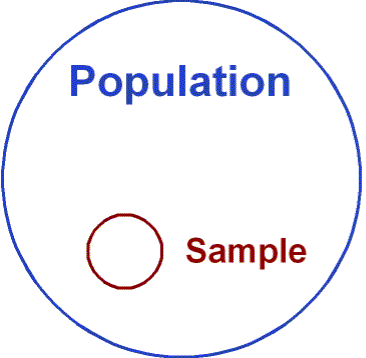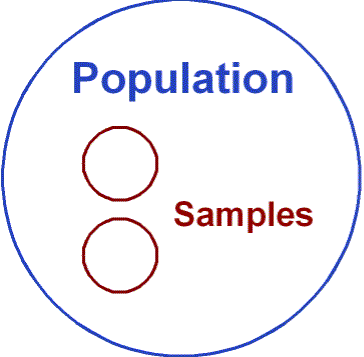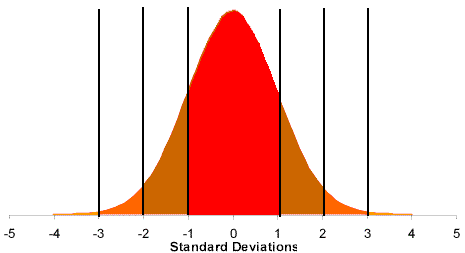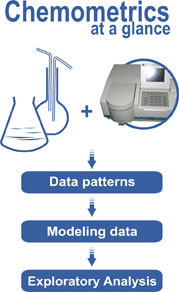Every citizen accused of a crime is entitled to the Due Process of Law, but why aren’t accused citizens entitled to the Due Process of Science?

Every Blood Alcohol Content that is reported in Court across the entire nation is just an estimate of the true value.
A bold statement no doubt, but worthy of not only repeating again, but also explaining.
Every Blood Alcohol Content that is reported in Court across the entire nation is just an estimate of the true value.
First, let’s take a look at some definitions:
True value: The actual population value that would be obtained with perfect measuring instruments and without committing any error of any type, both in collecting the primary data and in carrying out mathematical operations.
In our example of Blood Alcohol Testing for Blood Alcohol Content, this would mean testing every drop of blood collected. In our example of Breath Alcohol Testing for Blood Alcohol Content, this would mean testing every molecule of breath sample collected.
This is not done. Even on the most sophisticated devices used to arrive at Blood Alcohol Content, the entire captured sample is not tested.
Why is this important?
It comes down to analytical methodology or "how do we measure something?"
In essence it comes down to the difference between replicate measurement versus duplicate measurement.
Not only are the two very frequently transposed for one another, but also because scientists themselves have not settled upon the precise working definition of these two terms in the practical world. I choose to use the term as defined by the world of analytical chemistry as that is most often the field that we are seeking to apply the definitions to. If you bear with me, you will see how illusive the terms really are in practical implementation and hence the ambiguity, I would argue.
The technical definitions of “Duplicate measurement” versus “Replicate measurement” as defined by our friends in the analytical chemistry field.
Duplicate measurements: Two measurements made concurrently and in the same location, or side-by-side. Used to evaluate the precision of the measurement method.
Replicate measurements: are multiple measurements made upon the same sample. Replicate measurements allow statistical treatment of data – this allows, for example, the spread of data and relative standard deviations to be calculated. Replicate measurements also allow some sources of error (especially indeterminate) to be identified.
Why does this matter to a person accused of a DUI?
The best analytical testing method to come as close as possible to reporting the true value would allow for both: (1) duplicate measurement based testing to avoid random sampling error (defined below) as only an aliquot is ever really measured by a analytical device; and, (2) replicate measurement based testing to allow for meaningful measurement of the uncertainty of the result (i.e., computation of the standard deviation assuming a Gaussian distribution-defined below)
Neither the analytical devices nor any protocol used nationally to derive the closest to an accused’s true Blood Alcohol Content employs features of both.
- None of the breath test machines that I am aware of on the market are true replicate analysis (yes, I even include Minnesota Intoxilyzer 5000).
The best example of a replicate measurement device is a split column dual analysis GC, but even it is not a true duplicate analysis, is it?
As an open question to all I ask: "In blood testing, is it truly duplicate analysis if it is taken from the same tube?"
Would not the best method be something like this:
- 2 specimens of blood in two separate tubes (Tube A and Tube B)
- then each tube (Tube A and Tube B) divided into two separate specimens (Tube A—>specimen 1 and specimen 2) and (Tube B—>specimen 3 and 4)
- then take the specimen cups and make them into two duplicate measurements (Specimen 1—>Test 1 and Test 2) and (Specimen 2—>Test 3 and Test 4) and (Specimen 3—>Test 5 and Test 6) and (Specimen 4—>Test 7 and Test 8)
- Test all 8
- Apply chemometrics to arrive at meaningful uncertainty budgets
Would not this be more robust?
I mean you could really apply some meaningful chemometrics to this, right?
Who doesn’t want a robust and true analytical measurement of anything?
I suppose if we were to really look, I guess the answer is the government does not want it. Well, I suggest that is what their actions betray.
What is the Government’s excuse? LIMITED RESOURCES.
As a rhetorical philosophical question I ask do we as a society want to use the practical excuse of “limited resources” (which is really a silly one that I do not think exists) to stand in the way of science and truth?
Without the meaningful application of chemometrics and the quantification of uncertainty with each and every presentation of a number in the Courtroom, are we not doing the opposite of science which is guessing by falsely presenting as an empirical absolute a true value that is ?
____
Footnotes:
Random sampling error: in the world of statistics and analytical chemistry it is the is the error caused by observing a sample instead of the whole population. Generally as one prepares a fraction of the whole to be analyzed, there is possible error due to sample-to-sample variation. These variations in the possible sample values of a statistic can theoretically be expressed as sampling errors, although in practice the exact sampling error is typically unknown. Sampling error also refers more broadly to this phenomenon of random sampling variation. The likely size of the sampling error can generally be controlled by taking a large enough random sample from the population. If the observations are collected from a random sample, statistical theory provides probabilistic estimates of the likely size of the sampling error for a particular statistic or estimator. These are often expressed in terms of its standard error.


Gaussian distribution: The normal distribution is pattern for the distribution of a set of data which follows a bell shaped curve. This distribution is sometimes called the Gaussian distribution in honor of Carl Friedrich Gauss, a famous mathematician. The bell shaped curve has several properties:
- The curve concentrated in the center and decreases on either side. This means that the data has less of a tendency to produce unusually extreme values, compared to some other distributions.
- The bell shaped curve is symmetric. This tells you that he probability of deviations from the mean are comparable in either direction.

Chemometrics is the science of extracting information from chemical systems by data-driven means. It is a highly interfacial discipline, using methods frequently employed in core data-analytic disciplines such as multivariate statistics, applied mathematics, and computer-science, but to investigate and address problems in chemistry, biochemistry and chemical engineering.

-Justin J. McShane, Esquire, Pennsylvania DUI Attorney
I am the highest rated DUI Attorney in PA as Rated by Avvo.com
You can follow me on Twitter, Facebook or Linkedin

Board Certified Criminal Trial Advocate
By the National Board of Trial Advocacy
A Pennsylvania Supreme Court Approved Agency
2 responses to “Why is Due Process of Law different than the Due Process of Science: Blood Alcohol Content is only an Estimate”